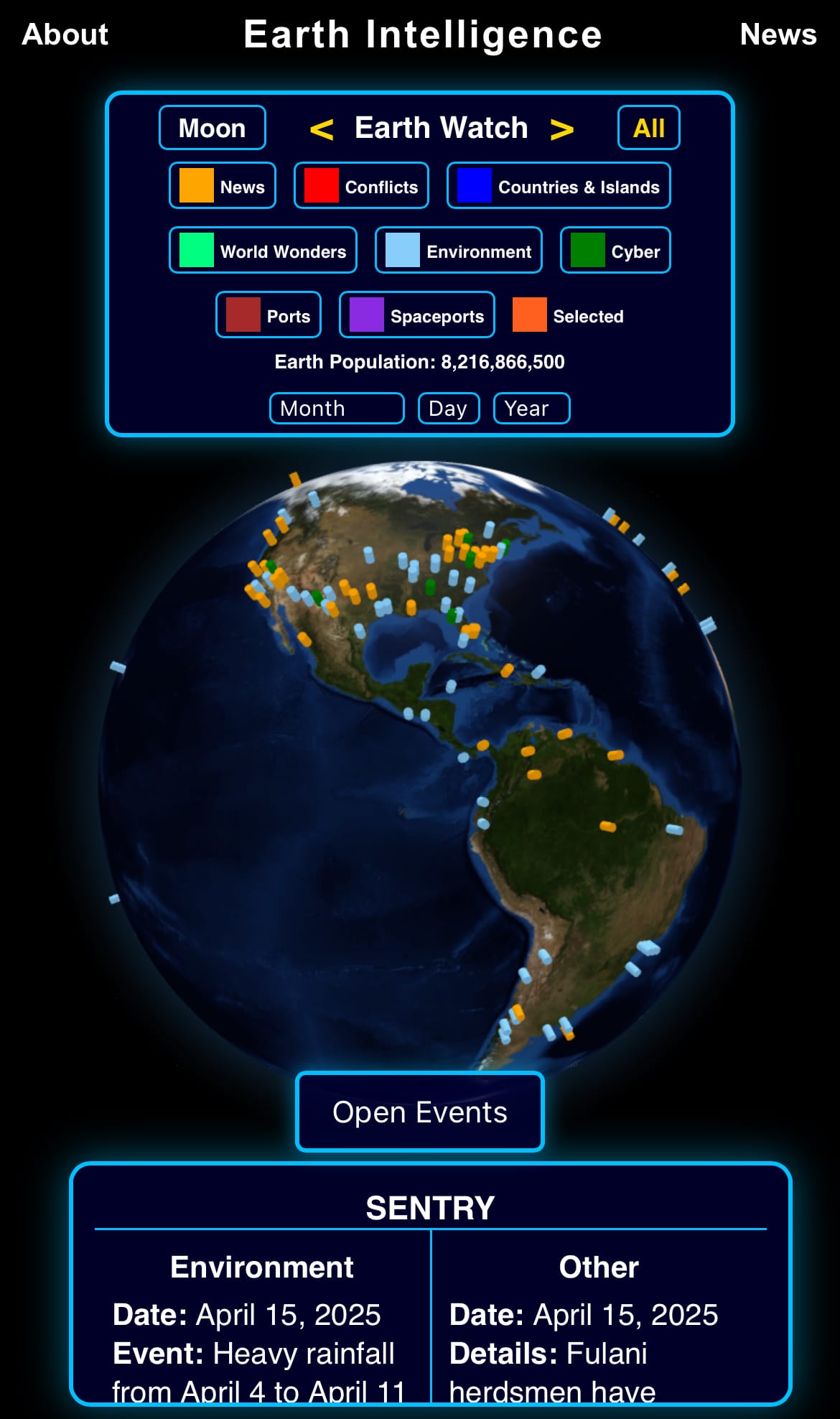Thursday☕️

Trending:
- Yesterday, April 30, 2025, the United States and Ukraine signed an agreement to establish the United States-Ukraine Reconstruction Investment Fund, a bilateral initiative to support Ukraine’s economic recovery following Russia’s invasion. The fund aims to harness the combined resources, expertise, and capabilities of both nations to drive investments in rebuilding Ukraine’s infrastructure and economy. The U.S. Treasury Department and the U.S. International Development Finance Corporation (DFC) will collaborate with Ukraine to develop the fund’s governance and operational framework, ensuring effective management of reconstruction efforts.

- The fund includes a key provision to exclude any state, entity, or individual that supported Russia’s war efforts from benefiting from Ukraine’s reconstruction, reinforcing the focus on Ukraine’s sovereignty. While specific details on funding amounts or project priorities were not outlined, the initiative is designed to accelerate economic recovery through targeted investments, delivering benefits for both Ukrainian and American stakeholders.
Economics & Markets:
- Yesterday’s U.S. stock market:

- Yesterday’s commodity market:

- Yesterday’s crypto market:

Geopolitics & Military Activity:
- Today, May 1, 2025, a Russian drone attack on Odesa, Ukraine, killed two civilians and injured five others, as reported by local authorities. The overnight strike targeted civilian infrastructure in the Black Sea port city, damaging buildings and vehicles. Multiple fires broke out across Odesa, which emergency responders worked to extinguish. This attack is part of a series of Russian drone and missile strikes on Ukrainian cities, causing significant civilian harm and infrastructure destruction amid the ongoing conflict.

- Odesa Regional Military Administration head Oleg Kiper stated that medics are providing comprehensive care to the injured, while emergency services address the aftermath. Tents have been set up to support affected residents, and efforts to clear debris and assist victims continue. Both Russia and Ukraine have sustained aggressive strike campaigns targeting commercial, civilian, and military assets, with Russia focusing on Ukrainian port infrastructure and energy facilities to disrupt trade and civilian life, while Ukraine has conducted drone and missile attacks on Russian military bases, oil refineries, and logistics hubs to weaken Moscow’s war effort. These tit-for-tat strikes have escalated economic and humanitarian costs on both sides.
Environment & Weather:



Science & Technology:
- On April 29, 2025, Anduril Industries, a U.S. defense product company, announced Pulsar-L (Pulsar-Lite), a compact, software-defined Electromagnetic Warfare (EW) system in its Pulsar family, designed for portability and rapid deployment. Weighing under 25 pounds and roughly the size of a shoebox, Pulsar-L can be set up in two minutes with minimal training. It detects, identifies, tracks, and neutralizes electromagnetic threats, such as drone swarms, by intercepting and disrupting their communication or navigation signals. Available in airborne and expeditionary configurations, it operates autonomously, enabling users to focus on missions while countering threats in complex environments, unlike bulkier traditional EW systems.

- Pulsar-L’s modular design supports ongoing software and hardware updates to tackle emerging electromagnetic threats, ensuring long-term adaptability. It can function independently or integrate with Anduril’s Lattice platform or other command-and-control systems, such as the Tactical Assault Kit (TAK), for coordinated operations. Currently in low-rate initial production, Anduril aims to produce over 100 units by the end of 2025, with plans to scale to thousands annually. Developed in eight months and already deployed in real-world operations, Pulsar-L reflects Anduril’s focus on innovative defense solutions, though its effectiveness against future threats will rely on continuous updates and field performance.
Statistic:
- Largest public Chinese companies by market capitalization:
- 🇨🇳 Tencent: $556.93B
- 🇨🇳 ICBC: $319.60B
- 🇨🇳 Alibaba: $285.01B
- 🇨🇳 Kweichow Moutai: $267.30B
- 🇨🇳 Agricultural Bank of China: $256.78B
- 🇨🇳 China Mobile: $229.36B
- 🇨🇳 China Construction Bank: $216.53B
- 🇨🇳 Bank of China: $207.09B
- 🇨🇳 PetroChina: $194.18B
- 🇨🇳 Xiaomi: $158.54B
- 🇨🇳 PDD Holdings (Pinduoduo): $149.87B
- 🇨🇳 BYD: $146.54B
- 🇨🇳 CM Bank: $140.77B
- 🇨🇳 CATL: $140.21B
- 🇨🇳 Ping An Insurance: $119.80B
- 🇨🇳 China Life Insurance: $117.61B
- 🇨🇳 CNOOC: $106.54B
- 🇨🇳 Meituan: $102.64B
- 🇨🇳 China Shenhua Energy: $99.58B
- 🇨🇳 China Yangtze Power: $99.28B
- 🇨🇳 China Telecom: $91.69B
- 🇨🇳 Sinopec: $87.98B
- 🇨🇳 Midea: $77.18B
- 🇨🇳 Bank of Communications: $71.01B
- 🇨🇳 Wuliangye Yibin: $68.71B
History:
- Electronic warfare (EW) emerged in the early 20th century as militaries recognized the strategic value of electromagnetic spectrum manipulation. During World War I, radio communication became critical, but its vulnerability was evident as adversaries intercepted signals. The British Royal Navy pioneered early EW by jamming German radio transmissions and developing direction-finding techniques to locate enemy ships. By World War II, EW matured significantly. The Battle of Britain saw the Luftwaffe’s radio navigation systems, like Knickebein, disrupted by British “jammers” under the direction of physicist Robert Cockburn. Radar, a game-changer, spurred countermeasures; the Germans deployed Düppel (chaff) to confuse Allied radar, while the Allies used “Window” to similar effect during the Hamburg bombings of 1943. The U.S. developed the SCR-584 radar and proximity fuses, countered by German jammers like the Würzburg. The Cold War intensified EW innovation, with the U.S. and Soviet Union investing heavily. The U.S. Navy’s ALQ-99 jamming system, deployed on EA-6B Prowler aircraft, became iconic, while the Soviets fielded the Khibiny system on Su-27 fighters. SIGINT (signals intelligence) platforms, like the U-2 spy plane, gathered electronic emissions, shaping the cat-and-mouse game of electronic countermeasures (ECM) and counter-countermeasures (ECCM).
- The post-Cold War era saw EW evolve with digital technology and cyber integration. The 1991 Gulf War showcased U.S. dominance, with EF-111 Ravens and F-4G Wild Weasels suppressing Iraqi radar networks, enabling precision strikes. Companies like Raytheon (ALQ-184 jammers) and BAE Systems (AN/ALR-56 radar warning receivers) became key players, alongside Lockheed Martin’s contributions to stealth and EW integration in platforms like the F-35. Russia’s Krasukha-4 and China’s Type 055 destroyer EW suites emerged as sophisticated rivals, emphasizing wide-spectrum dominance. The 21st century introduced cognitive EW, leveraging AI to adapt in real-time, as seen in DARPA’s Adaptive Radar Countermeasures program. Cyber-EW convergence, exemplified by Russia’s alleged GPS spoofing in Ukraine, blurred lines between electronic and information warfare. Nations like Israel, with Rafael’s C-GEM naval decoy system, and India, developing the Samyukta EW system, joined the fray. Today, EW spans space-based SIGINT, drone-mounted jammers, and quantum-based sensing, with players like Thales, L3Harris, and Northrop Grumman driving innovation in a domain where electromagnetic control often dictates battlefield success.
Image of the day:

Thanks for reading!
Earth is complicated, we make it simple.
Click image to view the Earth Intelligence System:



Support/Suggestions Email:
earthintelligence@earthintel.news




